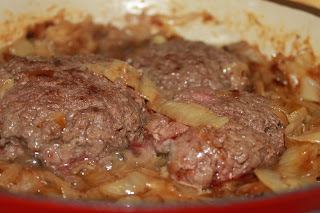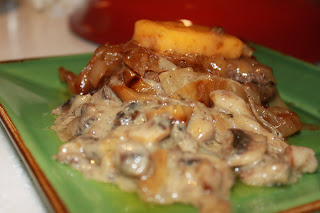Roasted Duck Plus Innards with Tomato Sauce
>> Friday, April 23, 2010
Bison Cheddar Cheeseburger wth Grilled Onions and Mascarpone Mushroom Sauce
>> Thursday, April 15, 2010
Onion Soup
>> Saturday, April 10, 2010
This recipe is basically the base of French Onion Soup without the addition of alcohol. The deep flavor will come from the caramelization of the onions and this will often take one to two hours to get the perfect sweetness. Add herbs and spices to your liking and maybe even some melted swiss on top if you're able to eat cheese.
Making Beef Broth or Simple Steps to Be a Bad Hindu
>> Thursday, April 8, 2010
Drinking mineral-rich broth daily (or with every meal) is a wonderful way to improve your digestion. A good bone broth will be loaded with fat, gelatin, and marrow, all prized for their healing properties. Broth can be made from any bones, but I find beef to be the most healing for me (ironic because I'm Hindu). About 4 months ago, I was unable to properly digest any nut. Now pecans are no problem. My husband has always had a problem with dairy, shellfish, and beef. No more. I attribute all this healing to a daily breakfast of beef soup (and a 6'3" 189 lb dose of loving).






















































